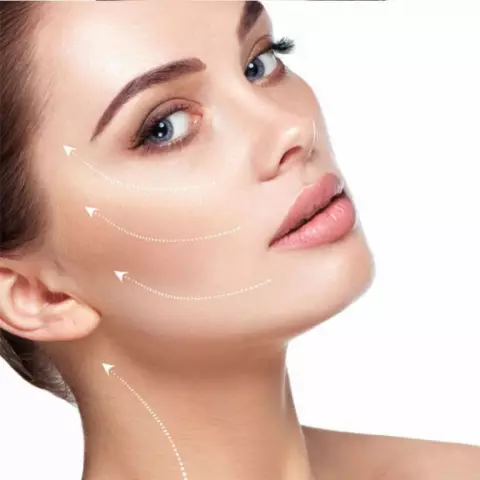- Author Rachel Wainwright [email protected].
- Public 2023-12-15 07:39.
- Last modified 2025-11-02 20:14.
Electrotherapy

Electrotherapy is one of the methods of physiotherapy based on the controlled effect on the body of electric current, magnetic and electromagnetic fields.
Today, it is known that the human body is a bulk conductor of charged ions migrating in the presence of an electromagnetic field. Positively charged particles move to the negative pole, negatively charged - to the positive, ensuring the normal functioning of all body systems.
One of the first methods of electrotherapy was franklinization - a method of combined effect on the body of a constant electric field, accompanied by a "quiet" discharge. The method of physiotherapy developed by the American scientist B. Franklin, according to observations, caused only positive changes in the human body: it improved blood circulation, lowered blood pressure, had a hyposensitizing and analgesic effect, and contributed to the speedy epithelialization of wounds. Franklinization was the "first step" of practical medicine towards the treatment of electricity.
Low frequency electrotherapy
Low-frequency electrotherapy is understood as the method of galvanization - exposure to the body of a constant electric current of low voltage and strength.
Sensitivity to galvanic current in different areas of the body is different, therefore, the maximum current is used when processing limbs (20-30 mA), when galvanizing the face and mucous membranes, the current value usually does not exceed 5 mA.
Depending on the duration of the action of low-frequency electrotherapy on the body and its dosage, galvanization improves the peripheral blood circulation, helps to restore damaged nerves and tissues. The technique of electrotherapy is indicated for diseases and injuries of the peripheral nervous system, disorders of the spinal and cerebral circulation, neurasthenia, vegetative dystonia, chronic inflammatory processes, diseases of the digestive system, hypotension, hypertension, angina pectoris, atherosclerosis of blood vessels in the initial stage.
In cosmetology, low-frequency electrotherapy is used to painlessly remove toxins from tissue cells, eliminate shallow wrinkles and smooth out age-related wrinkles. Galvanization has a positive effect on dry skin, making it smooth and elastic, eliminating age spots and blackheads.
Iontophoresis is one of the methods of galvanization and electrotherapy, based on a combination of the effect on the human body of a low-frequency current and a drug introduced together with it, which ensures its higher therapeutic efficiency and prolongation of action.
Medicinal substances (vitamins, hyaluronic acid) accumulate in the dermis and epidermis, gradually penetrating into the blood and lymph vessels. The electrotherapy procedure, together with medications, provides a quick and lasting rejuvenating effect.
Low-frequency electrotherapy is perfectly compatible with other popular cosmetic procedures: hardware cosmetology, laser rejuvenation, chemical peels, etc.
High frequency electrotherapy
High-frequency electrotherapy is a method of influencing the human body, which consists in the application of alternating current of high, ultra-high and ultra-high frequencies, named after the French physicist and physiologist Arsene d'Arsonval.
Distinguish between local and general darsonvalization. The course of general electrotherapy consists of 20-30 procedures and is used for such diseases as hypertension, migraine, varicose veins, hemorrhoids, increased fatigue, frostbite and non-healing ulcers.
The use of local high-frequency electrotherapy is widespread in cosmetology. During the action of the electrode on the skin of the face and neck, a one-stage vasospasm occurs, in which blood and lymph begin to circulate intensively throughout the body, eliminating congestion, normalizing turgor and skin tone.
For cosmetic purposes, darsonvalization is used:
- After medical and hygienic cleansing of the face;
- Immediately before applying a mask or nourishing cream;
- In order to eliminate the signs of dry, flabby, aging skin;
- For oily skin;
- Combined with head massage.
High-frequency electrotherapy is an effective and non-traumatic method of influence that evokes positive emotions in the patient and provides a lasting and visible result.
Pulse electrotherapy

Pulse electrotherapy (or diadynamic therapy) is a method of influencing the human body with direct currents of 50 and 100 Hz impulses with continuous alternation of short and long periods. During the procedure, the patient feels a tingling sensation, slight burning sensation, vibration. Diadynamic therapy helps to improve blood circulation, resorption of edema, increasing the oxygen content in the cells of the body, and is used for severe pain syndrome, traumatic injuries, diseases of the musculoskeletal system and joints, epilepsy, migraine and some other diseases.
In the practice of physiotherapy, pulsed electrotherapy is often used in combination with mud therapy, therapeutic electrophoresis.
Under the influence of stress, a person is far from always able to relieve muscle tension and fully relax. Diadynamic therapy is one of the most effective methods of relaxation, which allows to normalize the tone of spasmodic vessels, to cause contraction of skeletal and smooth muscles.
In cosmetology, diadynamic therapy is rarely used, since high frequencies of the technique can cause tetanus - an intense contraction of muscle fibers that causes painful sensations.
Contraindications to electrotherapy
Despite the numerous positive effects, it is necessary to resort to electrotherapy with caution, taking into account all the existing contraindications to electrotherapy:
- Epilepsy;
- Neoplasms of any localization and etiology;
- Feverish conditions;
- Pustular infections;
- Insufficiency of blood circulation of the 3rd degree;
- Stage 3 hypertension;
- Acute bleeding;
- Vein thrombosis;
- States of narcotic, alcoholic or mental agitation;
- Pregnancy;
- Individual intolerance;
- Active tuberculosis;
- Multiple sclerosis;
- Urolithiasis and cholelithiasis;
- Parkinson's disease;
- Individual intolerance.
For a complete list of diseases, in the presence of which the use of electrotherapy is not recommended, you can consult a therapist or certified cosmetologist.
Found a mistake in the text? Select it and press Ctrl + Enter.






